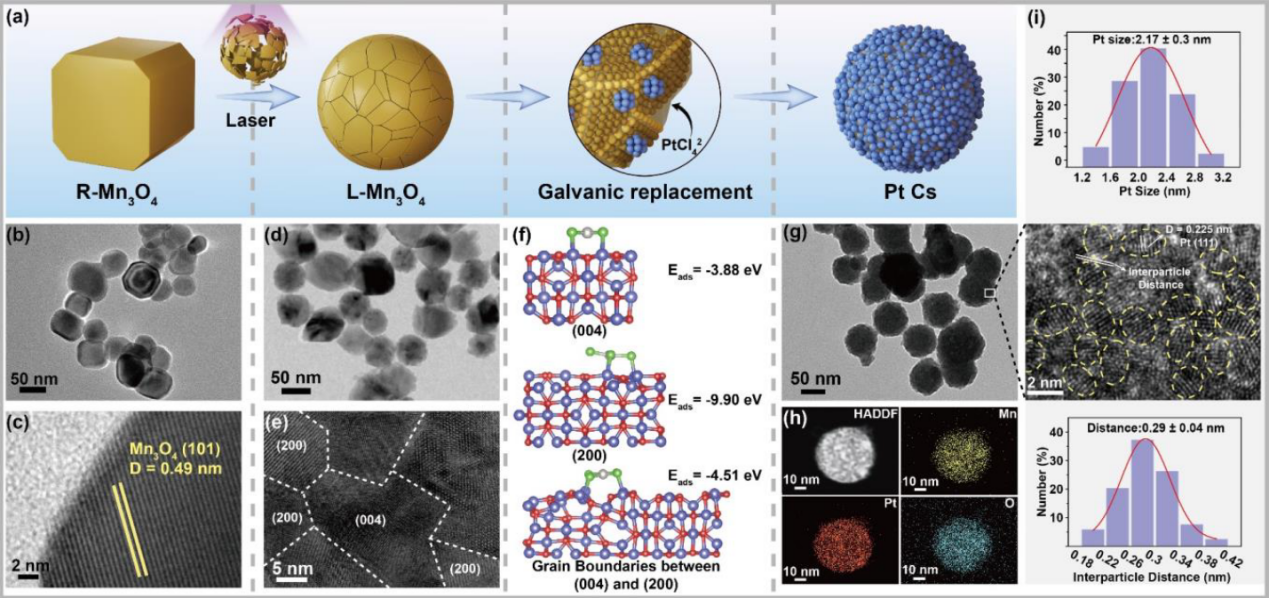
Recently, a research team led by Prof. LIANG Changhao from the Institute of Solid State Physics, the Hefei Institutes of Physical Science of the Chinese Academy of Sciences, in collaboration with researchers from the High Magnetic Field Laboratory, the University of Padova (Italy), and Shanghai Jiao Tong University, demonstrated the laser-assisted synthesis of Pt Colloidosomes and their near-infrared photo-catalytic, enzyme-mimicking therapeutic applications.
The related research results were published in Angewandte Chemie International Edition.
Interband and intraband electronic excitations in transition metals as nanocatalysts are crucial for the generation of hot carriers. Unlike the well-known Au, Ag and Cu nanoparticles (NPs), in which hot carriers are directly formed by absorption of visible light, Pt NPs still have limited hot carriers photogeneration ability.
Nonetheless, Pt's unique d-band structure permits a high density of electronic states near Fermi energy. It should have exhibited photoenhanced catalysis.
In this study, guided by Finite-Different-Time-Domain calculations, the team take advantage of Pt electronic structure by designing a sub-100 nm colloidosome (Cs) consisted of ultrasmall (≤ 5 nm) Pt NPs with broadband absorption from visible to near-infrared (NIR) band. The ultrasmall Pt NPs in the Cs efficiently generated hot electrons even under excitation with the low-energy electromagnetic radiation. The key for realization of Cs is the exploitation of laser-generated, grain boundaries (GBs) enriched Mn3O4 NPs as scaffolds for the efficient and homogeneous loading of ultrasmall Pt NPs.
This research demonstrated that NIR photo-excitation of Pt Cs greatly improves their dual-enzyme (CAT and OXD) and the self-cascade catalytic activities.
Besides, the in vivo experiments demonstrate the superior antitumor ability of Pt Cs for NIR-responsive photocatalytic tumor therapy and the possibility of tracking their biodistribution with the assistance of MRI guidance.
These results highlight the advantages brought by the Pt Cs successfully designed for optimal and efficient generation of hot electrons under NIR light excitation.

Synthesis and basic characterization of Pt Cs (Image by YE Yixing)